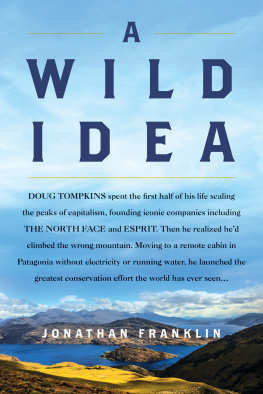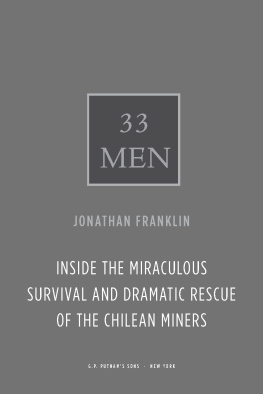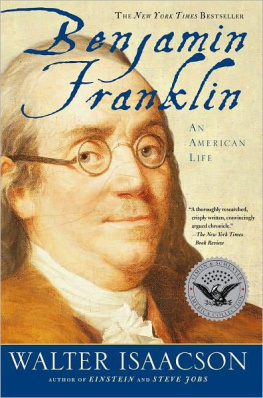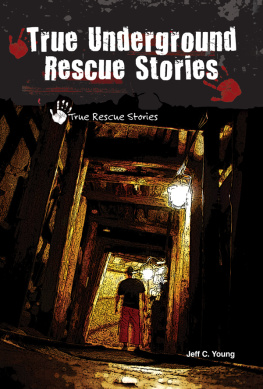

G. P. PUTNAMS SONS
Publishers Since 1838
Published by the Penguin Group
Penguin Group (USA) Inc., 375 Hudson Street, New York, New York 10014, USA Penguin Group (Canada),
90 Eglinton Avenue East, Suite 700, Toronto, Ontario M4P 2Y3, Canada (a division of Pearson Penguin
Canada Inc.) Penguin Books Ltd, 80 Strand, London WC2R 0RL, England Penguin Ireland, 25
St Stephens Green, Dublin 2, Ireland (a division of Penguin Books Ltd) Penguin Group
(Australia), 250 Camberwell Road, Camberwell, Victoria 3124, Australia (a division of
Pearson Australia Group Pty Ltd) Penguin Books India Pvt Ltd, 11 Community
Centre, Panchsheel Park, New Delhi110 017, India Penguin Group (NZ), 67
Apollo Drive, Rosedale, North Shore 0632, New Zealand (a division of Pearson
New Zealand Ltd) Penguin Books (South Africa) (Pty) Ltd, 24 Sturdee
Avenue, Rosebank, Johannesburg 2196, South Africa
Penguin Books Ltd, Registered Offices: 80 Strand, London WC2R 0RL, England
Copyright 2011 by Jonathan Franklin
All rights reserved. No part of this book may be reproduced, scanned,
or distributed in any printed or electronic form without permission.
Please do not participate in or encourage piracy of copyrighted
materials in violation of the authors rights. Purchase only
authorized editions.
Published simultaneously in Canada
A CIP catalogue record
of this book is available
from the Library of Congress.
ISBN 978-1-101-51322-4
Book design by Claire Naylon Vaccaro
Map and Diagram by Jeffrey L Ward
MEN
JONATHAN FRANKLIN
INSIDE THE MIRACULOUS
SURVIVAL AND DRAMATIC RESCUE
OF THE CHILEAN MINERS
G.P. PUTNAMS SONS NEW YORK
CONTENTS
This book is dedicated to my family, who barely saw me for the duration of this dramatic tale: Toty, my ever patient and daredevil wife, and my six precious daughters, Francisca, Susan, Maciel, Kimberly, Amy and little Zoe. And finally to my grandson Tomas, who hardly saw me.
Writing this book was a challenge and a journey, not nearly as wrenching as that lived by the thirty-three miners, but I, too, am excited to finally be at home and at peace.
Jonathan Franklin
December 2010
Santiago, Chile




PROLOGUE THE EYES OF THE WORLD
On October 12, a dense dawn fog covered a packed mountainside in northern Chile. Dreamy banks of mist climbed up the slopes. The sun was still hidden over the horizon; a cold damp air rose up from the Pacific Ocean and sucked away body heat. The few figures that meandered through the makeshift camp at this early hour were ghostly silhouetteslike fleeting mirages here in the Atacama Desert, one of the worlds driest locations.
In the media encampment, a maze of floodlights illuminated fields of antennae. Dozens of satellite transmitters were propped atop a field of boulders.
Huddled around a campfire, fingers and arms entwined, the valos family prayed and talked in quiet reverence directly above two buried relatives: twenty-nine-year-old Renn and thirty-one-year-old Florencio valos. Nine weeks earlier, on August 5, the brothers had entered the San Jos mine for a twelve-hour shift. By mid-afternoon a massive slab of rockthe size of a skyscraperhad sheared off the mountain and sealed them at the bottom of the mine.
For nine weeks the valos family had hoped and prayed for a miracle. First to hear word that the brothers were alive and then to have them safely rescued from the depths of a mine that even on the best days was notorious for killing and maiming miners.
From the moment the mine collapsed in early August, hundreds of professional engineers, rescue workers, drillers and diggers had descended on this previously remote and deserted corner of northern Chile. They arrived to volunteer, offering their ideas, their equipment and their hard labor. Using both diplomatic channels and contacts in the business community, Chilean President Sebastin Piera made a simple but profound call for help. He said, We have these guys trapped at seven hundred meters [2,300 feet]. What technologies do you have that could possibly help?
The response was overwhelming.
Now the rescue was in its final stage. In less than twenty-four hours, a rocket-shaped capsule known as the Phoenix would be slowly lowered into the earth, to the bottom of the mine. Florencio valos would be the first miner to open the door of the contraption and attempt to ride to the surface. His family knew the designation was both an honor and a risk.
Hundreds of rescue workers had worked for months for this moment, most of them laboring in silence. All now brimmed with pride at the chance to play a small part in what was increasingly a global drama and what they all knew was a massive experiment. Never before had miners been rescued from such a depth after months of entrapment. Despite numerous theories that such a rescue was possible, everyone knew the law of averagesnever great in an industry as dangerous as miningwas stacked against the probability that all the men could be rescued alive.
Named Operation San Lorenzoin homage to Saint Lorenzo, the patron saint of minersthe rescue was led by Codelco, the Chilean state-owned mining company that, over the past two months, had gathered the worlds most sophisticated drilling and mapping equipment.
Codelco, a modern company with profits in excess of $4.5 billion a year, had used a fleet of borrowed, rented and improvised drilling rigs to find the men, and to feed them for sixty-nine days. Now was the moment of truth. Could they pull the men to safety? From a depth more than twice as high as the Eiffel Tower? The rescue hole was so small that the miners had been instructed to exercise strenuously to make sure they would actually fit inside the capsule.
Despite the early hour, hundreds of journalists were already awake, lugging camera equipment in an effort to reserve a privileged spot for a drama that had captured the hearts and imaginations of viewers worldwide. Not since the moon landing had a technical challenge so intrigued and captivated the world. And in 2010, the wired world offered dozens of new ways to follow and comment on the proceedings.
With their heads bowed toward a scorching mound of orange embers, testament to weeks of waiting, the valos family appeared oblivious to the growing commotion. They offered a few comments, then ignored the arrival of a stray cameraman. The journalistwith cables and soundman in towwaded in for a few minutes of live broadcasting, every word transmitted to an audience around the world, and then migrated to the next family.
Behind the valos family was the banner Buried Perhaps... Overcome Never. The miners faces stared out from the sign, half hidden in the dark. As individuals, their faces were unremarkableserious, dour and weathered. As a group, they were Los 33, a worldwide symbol of resilience.
Throughout September and October 2010, as the rescuers drilled through a mountain of granite in search of the trapped men, the fate of Los 33 had become a collective narrative. The worlds leading journalists flooded in, battling over scarce airline tickets to travel to Copiap, a city so forgotten that when Chilean broadcasters delivered the national weather forecast, this was the only major city in Chile they simply skipped. When the World Cup trophy toured all of Chile, they didnt stop here, groused Copiap mayor Maglio Cicardini, a ponytailed showman who looked like a backup rock-and-roll guitarist for ZZ Top.
Next page

















